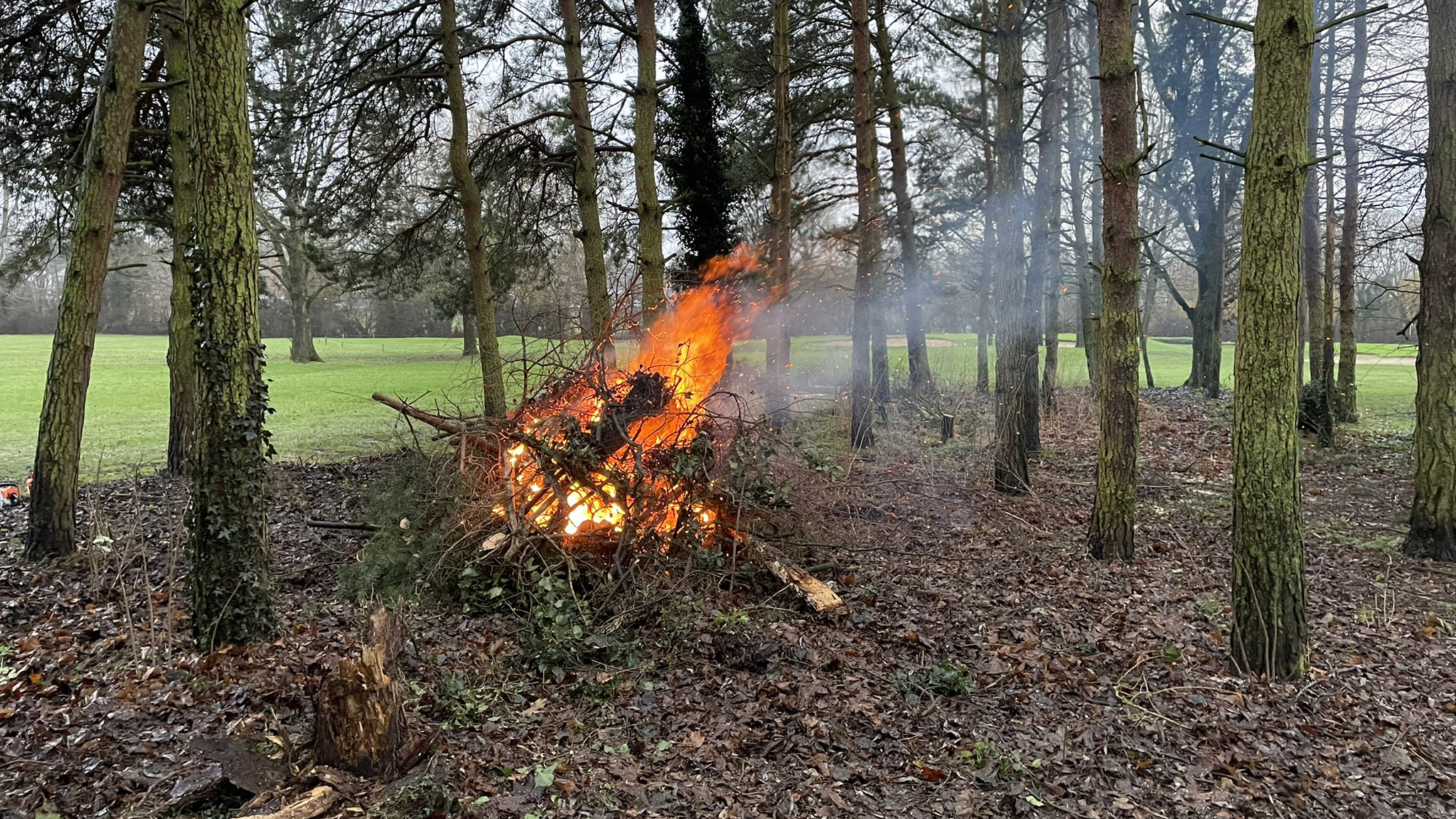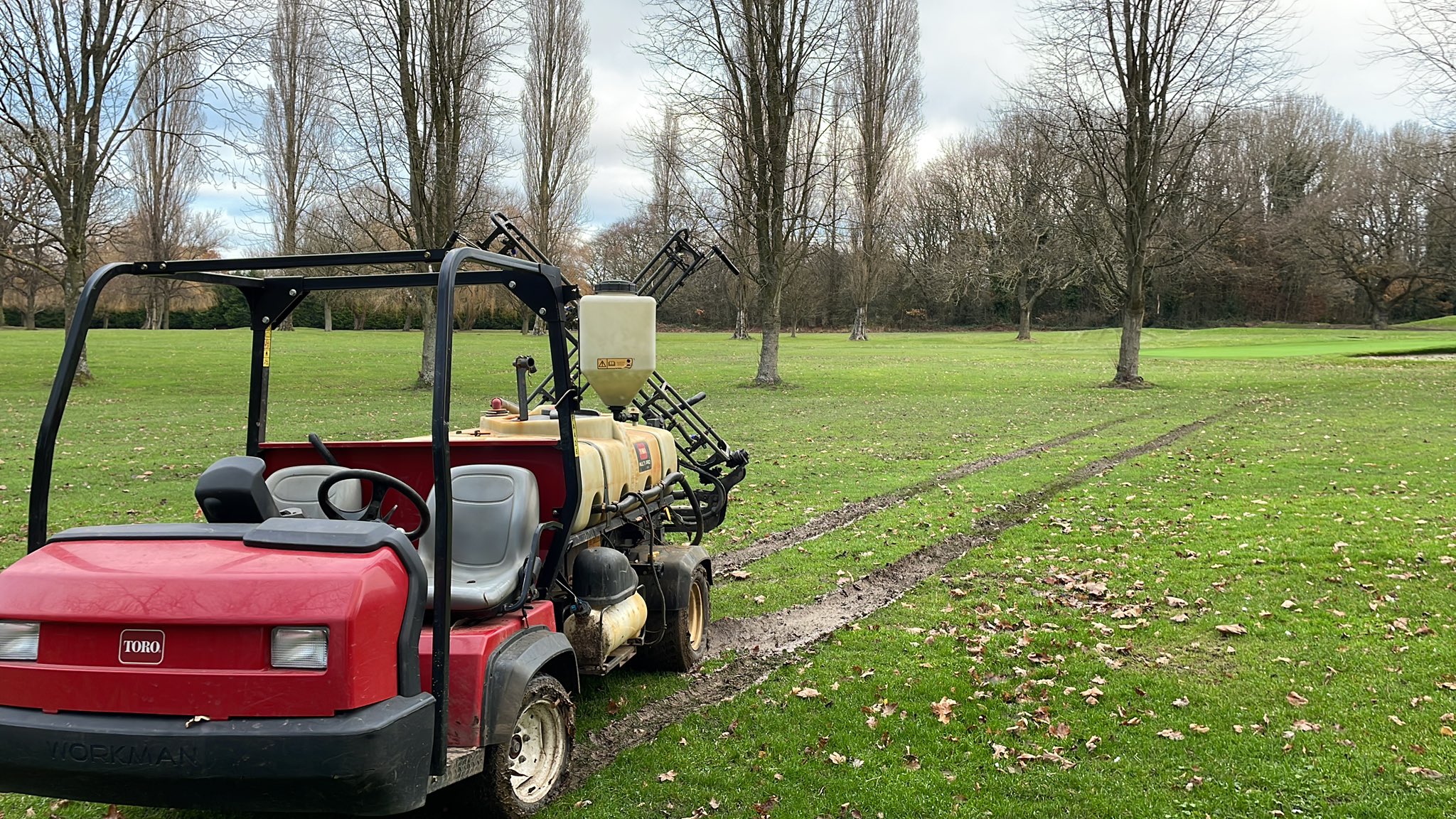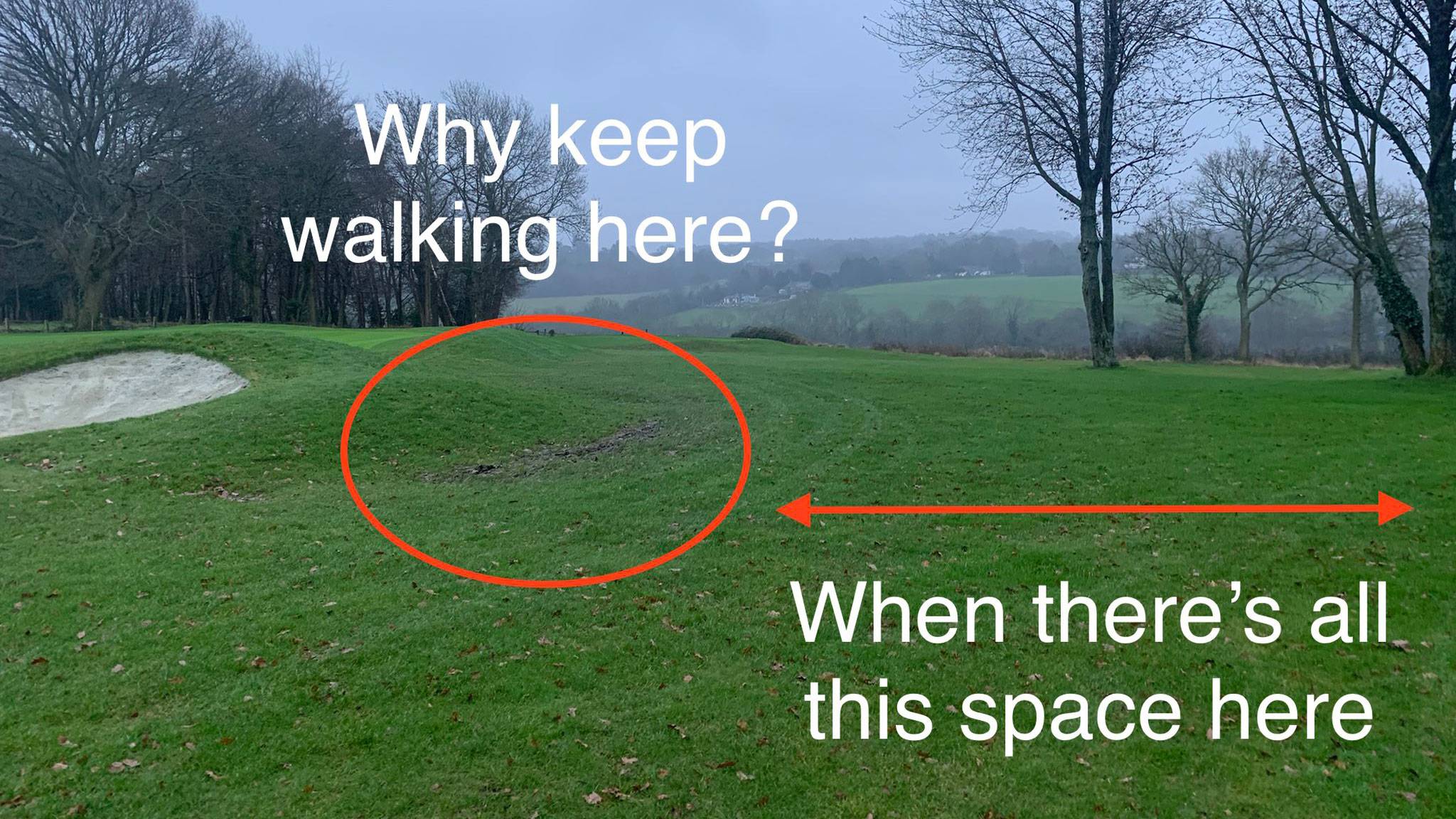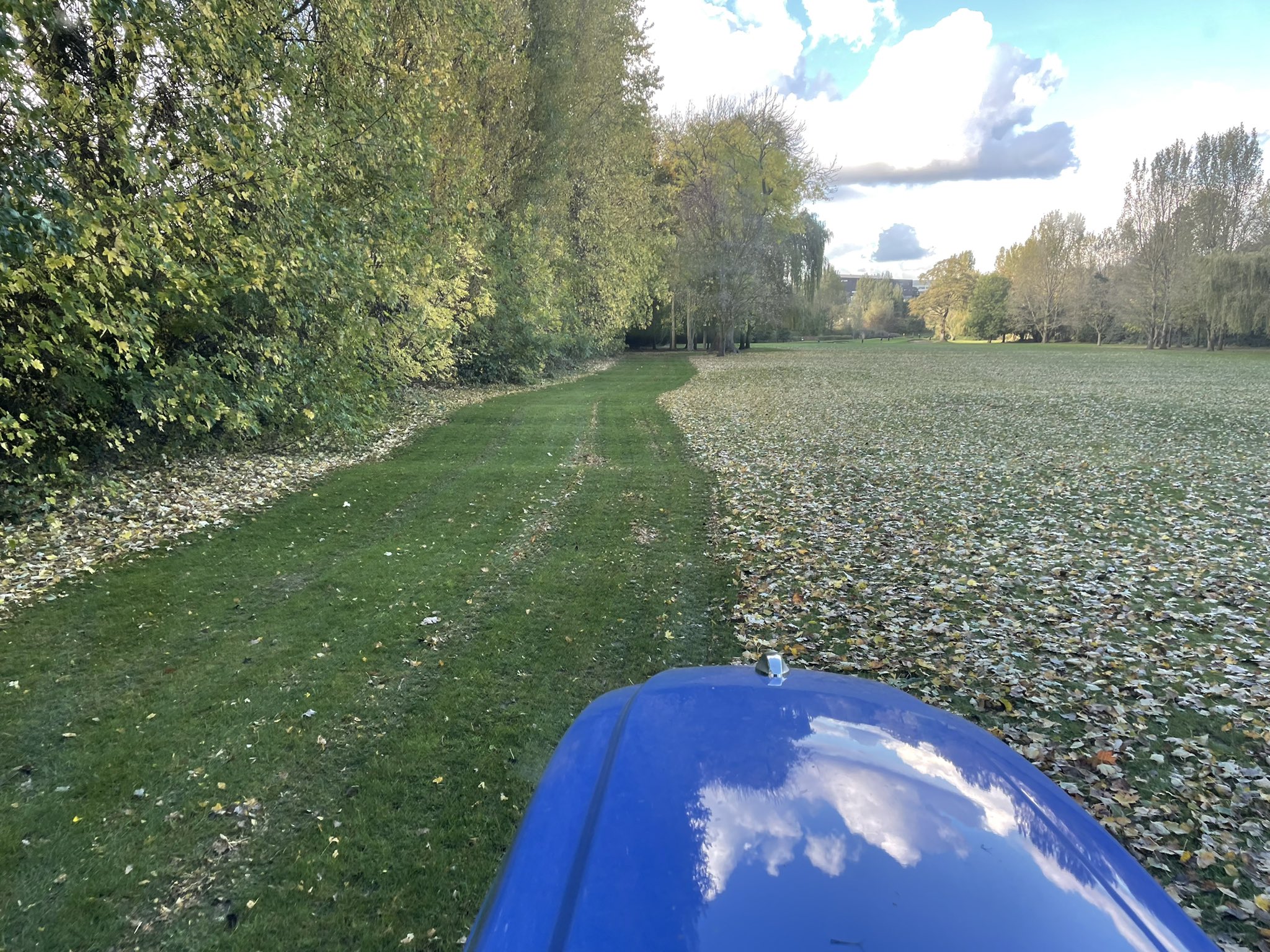‘We Are Up Against It From The Word Go’ - Greenkeeper Laments Brutal Festive Weather
Alex Narey speaks to Chris Low, head greenkeeper at Walsall Golf Club, about the challenges of a harsh winter and why golfers can still do more to help and understand course maintenance


‘We Are Up Against It From The Word Go’ - Greenkeeper Laments Brutal Festive Weather
Let’s start with a question: if someone was to say to you that we’ve had 25mm of rain in the last day, would you have any idea just how much rain that is?
On the face of it, 25mm doesn’t sound a lot, right? Well, a recent tweet from Radyr Golf Club – on the outskirts of Cardiff – sought to offer some clarity. On December 28, the club highlighted that nearly 100mm of rain had fallen since Christmas Day, and so explained just what they were dealing with in terms of rainfall measurements to keep the course playable and ultimately open to its members. Effectively, 25mm of rain across their course would be enough to fill four and a half Olympic swimming pools. That’s 13,578,898 litres of water!
When you think about it this way, is it any wonder that so many golf courses are rendered unplayable at this time of year, with many over the Christmas period being forced to close their doors as greenkeeping staff battled against the elements.
For Chris Low, head greenkeeper at Walsall Golf Club, the rainfall has merely compounded what is already a thankless task with winters becoming wetter and warmer, and with many golf clubs in the UK having to deal with greater playing numbers following a boom in participation levels due to Covid, while also being under pressure to keep courses open to appease demanding members.
And, while increases in membership will no doubt be a welcome boost for a golf club’s coffers, the effects of a full booking sheet with, dare we say, more members taking advantage of a few holes as they ‘work from home’, does little to lighten the load with the working window for greenkeepers even tighter. It is astonishing so many clubs stay open. In truth, more should be closing their doors.
Related: Why Golfers Should Not Be Using A Trolley This Winter
Subscribe to the Golf Monthly newsletter to stay up to date with all the latest tour news, equipment news, reviews, head-to-heads and buyer’s guides from our team of experienced experts.
Related: 'A Real Kick In The Teeth' - Greenkeeper After 'Embarrassment' Course Comments

Leaves and tree debris are often cast aside on waste areas
On your marks… get set…
At 6.30am, Low, just like hundreds of other greenkeepers up and down the land, will begin his working day. It’s bitterly cold and with Walsall GC still draped in mid-winter darkness, his team must act quickly because they have about 90 minutes to get the course into shape before the rush-hour traffic hits with the early-morning tee times.
“We are up against it from the word go,” Low says. “We need that head start to beat the golfers because once they tee off, the golf course is no longer yours and once play is underway there are certain things you just can’t do.
“Believe me, every morning is such a challenge but I just don’t think golfers really understand that. They are quick to spot things they don’t like but many wouldn’t have a clue about the challenges we face to maintain the golf course and its condition.”

Just getting around the golf course can prove difficult for greenkeepers in winter
Lack of understanding
Low joined Walsall last year and, judging by his Twitter feed, he is clearly a man who is proud of his work. Regular posts detail the efforts he and his team go to in order to keep things ticking over, while he also pens an informative blog to keep members updated on course changes and any issues they need to understand.
A keen player himself with a five handicap, Low appreciates how golfers work and says he can feel the frustrations when he doesn’t see the course playing fairly; like the inconsistent greens and the untidy bare lies on the fairway. But he maintains that golfers can do more to help with the condition of their course. Quite simply, too many take things for granted.
“I think what members sometimes don’t understand is that just by walking in the right areas of the course, they could be helping us out,” he says. “We will go out early and put ropes and stakes in the ground to try and guide the traffic, but then golfers will walk as tight as they can to the ropes and they will all follow the path we are trying to steer them away from.
“They will create pathways of mud just by doing this, instead of walking on lush grass. If golfers just thought about it and walked on the lusher areas they could help improve the look and condition of the course. Golfers are like sheep. They all just follow each other’s paths.
“It always makes me laugh when I play golf with someone and they ask me what I do for a living. There is this look when I tell them I am a greenkeeper, and they will say something like, ‘Well, I better be on my best behaviour today then’. It’s a bit of banter but quite a lot of the time I think that’s the way it is; not enough golfers have an instinctive feel for looking after their own course.
“Every golfer will say they always repair two pitch marks, but if they did that there wouldn’t be any pitch marks to repair, so they obviously don’t. The problem with pitch marks and why so many people don’t repair them is because they don’t watch the ball.
“People think they hit it further than they do, so they think their ball pitches next to where their ball has finished, and a lot of the time when the greens are firm at the start of the winter period, they are pitching at the front of the green and their ball is rolling towards the back, but they don’t see their pitch mark as they are looking in the wrong place.

A recent tweet from Kingswood G&CC highlighted the issue of golfers taking the 'racing line' and creating muddy pathways
Problems… Problems…
For any golfer, getting around the golf course is never easy at the best of times, but in the depths of winter it is one of the biggest tests for a greenkeeper and one which Low says is now tougher than ever after two months of heavy rainfall that have left certain routes inaccessible.
First thing in the morning, the greens are covered in thick dew which, if not treated properly, will leave the putting surfaces susceptible to disease in the colder months where there is no regrowth or chance to recover until early spring. Animals, mainly foxes, will have chewed through guide ropes, which is another time constraint. Then of course you have to contend with damage from leather jackets while getting the fairways up to scratch and clear as many leaves as possible.
Ah, yes, the leaves, the scourge of so many golfers between October and January. But clearing all the leaves off a typical parkland course remains a colossal effort and one which can appear a thankless task.
“The leaves start coming down in September/October, and we would aim to have all the leaves off the course by the new year,” Low says. “You can’t collect every leaf; it’s just not possible. So you blow and try and disperse them into certain areas of the course, areas that are overgrown more than anything and that’s when you get areas that are just discarded, almost waste land. It can become unsightly. But there is little else you can do.”

Greenkeepers face a thankless task attempting to get leaves off the course before the new year
It’s not all about winter
While the summer no doubt eases pressure on greenkeepers with longer working days and less bad weather to battle with, there are still issues that must be confronted. Notably maintaining bunkers and controlling the weeds that grow in them.
Low admits that standards have to be higher in the summer, with many golfers just happy to be out in winter. But he adds that he and his team can put in about 100 man hours a week on keeping the bunkers up to standard and they will still only have completed one of the nines in this period.
“We will do maintenance through the summer period, so we will hollow tine the greens, and you will always get people saying ‘why are you ripping the greens up when they are so good’. Well, they are so good because we do this work to them. We hollow tine the greens in summer so they have time to recover as you are trying to make the most of the conditions and the growth period. If you give them time to recover at the end of summer, you are looking at about three weeks, but if we did that in December, I would struggle to get the greens in shape in two to three months.
“We try to educate people as to why we do this. But it’s difficult trying to keep everyone happy. People need educating more on the subject.”

Alex began his journalism career in regional newspapers in 2001 and moved to the Press Association four years later. He spent three years working at Dennis Publishing before first joining Golf Monthly, where he was on the staff from 2008 to 2015 as the brand's managing editor, overseeing the day-to-day running of our award-winning magazine while also contributing across various digital platforms. A specialist in news and feature content, he has interviewed many of the world's top golfers and returns to Golf Monthly after a three-year stint working on the Daily Telegraph's sports desk. His current role is diverse as he undertakes a number of duties, from managing creative solutions campaigns in both digital and print to writing long-form features for the magazine. Alex has enjoyed a life-long passion for golf and currently plays to a handicap of 13 at Tylney Park Golf Club in Hampshire.